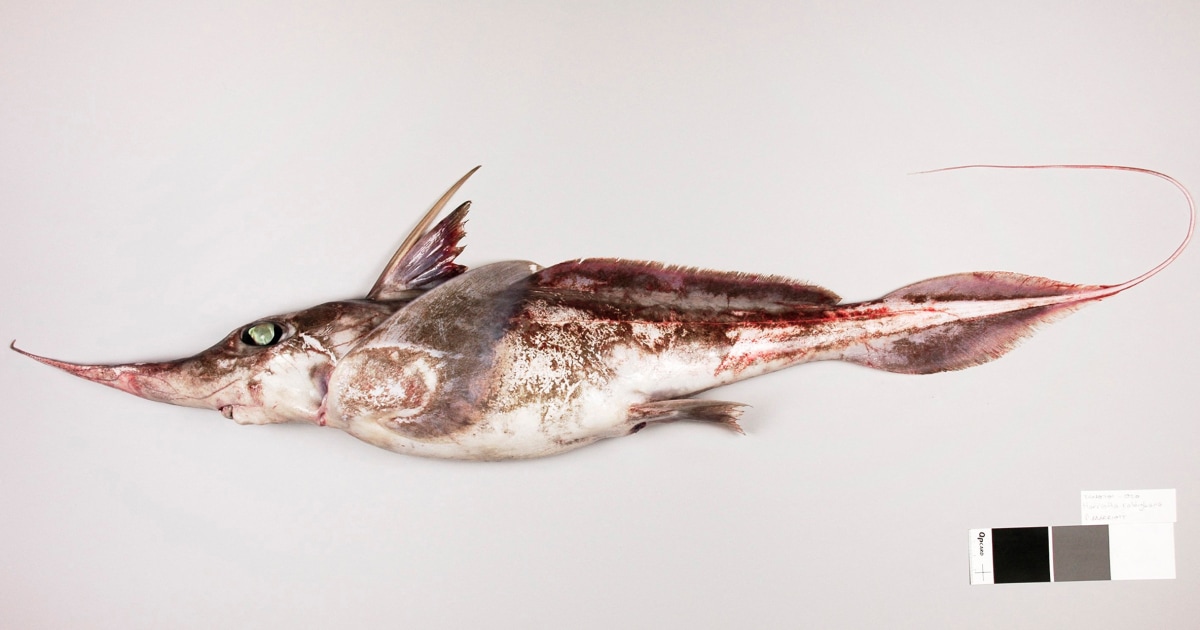
It may be early to get the Halloween decorations out for most, but in the deep waters of the Pacific Ocean spooky season is well underway.
Scientists said Tuesday they had discovered a new species of ghost shark that lives exclusively in the waters off Australia and New Zealand.
The Australasian Narrow-nosed Spookfish was found during research surveys in the Chatham Rise, an area of ocean floor to the east of New Zealand, according to the National Institute of Water and Atmospheric Research (NIWA) based in Auckland.
Ghost sharks, also known as chimaeras, are a group of cartilaginous fish closely related to sharks and rays. The newly discovered species has several distinctive features, including a long and narrow snout, broad pectoral fins, scale-free skin, and beak-like teeth.
They are largely confined to the ocean floor up to 2,600 meters (8,530 feet) deep, feeding off crustaceans such as shrimp and molluscs.
It was given the scientific name of Harriotta avia by NIWA Fisheries scientist Brit Finucci, in memory of her grandmother.
Previously, it was considered to be part of a single globally distributed species. But research later showed that it is genetically and morphologically different to its cousins.
“Ghost sharks always surprise me!” Finucci told NBC News on Tuesday. “It just goes to show how little we know about our oceans, particularly the deep sea.”
Ghost sharks are “poorly studied” because of their remote living environment and cryptic nature, she said. This long-nosed spookfish was better researched among its kind as it is often observed on research surveys and is caught incidentally in commercial fisheries, Finucci said.
However, we still don’t know their lifespan, population size or role in the ecosystem, Finucci noted. “There’s still a lot to learn about ghost sharks!”
It had been suspected that this species may be different to those in other regions, but it took time to collect enough information to confirm that, Finucci said.
“We are still describing new species on a regular basis, and sometimes these discoveries have been right under our noses the whole time,” she said.








